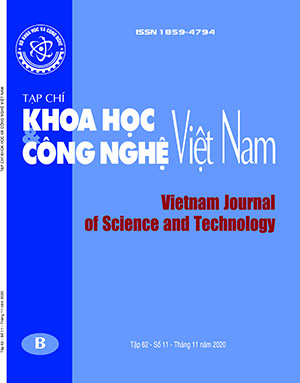Effect of graphite conductor on NaCl electrosorption capacity of activated carbon electrode.
Abstract
In this research, the porous composite electrode based on activated carbon and graphite was fabricated to apply as the electrode for desalination by Capacitive deionization technology (CDI). Activated carbon (AC) was derived from Vietnam coconut shell charcoal which was modified with HNO3 to increase its porosity and surface area. Graphite conductor was added to increase the electrical conductivity of the composite electrodes leading to the increased salt adsorption capacity of the material. The electrochemical analysis results showed that the salt adsorption process of the composite electrodes followed the capacitance mechanism. The specific capacitance value of the composite electrode materials reached 100.8 F/g in the presence of a 10% graphite. The salt adsorption capacity of the composite electrode system reached 9.01 mg/g at the applied potential of 1.2 V in a 2000 ppm NaCl solution. The study exhibited that m-AC-graphite composite electrodes are potential materials for desalination by CDI technology.

